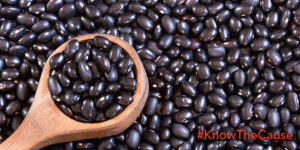

Ohhhh the places to look for mold. Last summer, my parents realized that their broken upstairs air conditioner was actually the result of a busted air duct in the attic; all the cold air that the functioning air conditioner was putting out was being used to cool the attic, leaving the upstairs uncomfortably warm. Since nobody lived upstairs at the time, a few months went by before they did anything about it. The cold air being spewed into the hot, humid attic caused vapor in the air to condense, creating a moist environment well suited to a particular organism we talk about a lot at KTC – mold. Mold had colonized in the ducting, which was fortunately ripped out.
Mold is a ubiquitous organism. It lurks in every corner of the globe. Our homes, regardless of how clean they are, are not exempt from this. Mold spores travel through the air and can get into even the most well maintained homes. Molds like dark and moist environments. Anywhere with any sort of exposure to moisture can provide conditions ripe for mold and mildew to colonize.
Many times, indoor mold is harmless. But mold colonies eventually produce spores; these spores are essentially mold “seeds”. Spores will eventually be released into the air and can contribute to respiratory problems and exacerbate allergies. And, under certain conditions, certain species of mold will produce mycotoxins. Molds use these natural metabolites to break down food around them, but they are toxic to other living organisms. These mycotoxins are well documented to cause severe health problems in humans, but they often go unnoticed, particularly in cases of indoor air contamination. In fact, if you are experiencing symptoms that aren’t easily explained, getting the air inside your house tested via a mold test kit is probably a good idea; and defiantly one area to look for mold.
Checking places that are easily contaminated is a good idea, as well. A good place to start would be vents and ducts. Particularly in the summer months, cold air can condense water vapor in warm, humid summer air. This often chronic moisture can provide conditions favorable to mold colonization. Any place with frequent water exposure – particularly dark places with little airflow – are prime suspects for mold colonies. Similar to the vents, ducting can also develop mold problems.
Because of the constant moisture, bathrooms can provide hospitable conditions to mold colonies. Check underneath sinks, around bathtubs and showers, behind shower curtains and any sort of exposed dry wall. Check your washing machine for any sort of colonies. (It may be a good idea to leave the door open to let the machine dry out after usage.)
Attics run the risk of mold contamination, as well. After heavy storms, any sort of leak can provide the moisture necessary for mold to colonize. It is incredibly important after hailstorms or any sort of flooding to make sure that mold doesn’t take root in affected dry wall or carpeting.
To look for mold is easily said but it can be particularly difficult to locate. If you suspect contamination, most hardware stores have mold test kits. For more serious matters, there are certain companies that specialize in mold remediation, and they can often use more sophisticated techniques to let you know if you have a mold problem. If you do find mold and decide to clean it yourself, be sure to take proper precautions. A mask, rubber gloves, protective eyewear and proper, anti-fungal cleaners are all good tools that will ensure your safety. For bigger jobs, consult a mold remediation company.
Indoor mold can be a serious issue with severe health effects. Checking suspect places is a good idea. Keeping your indoor air mold and mycotoxin free is one more step towards ensuring good health. Breathe freely!
Doug Kaufmann has written many books that cover a full range or health issues. Find out which of his books best suits you by clicking the button below.
Doug Kaufmann developed his diet after years studying the clinical effects of pathogenic fungi on the body. Fungi and yeasts can become parasitic organisms on and inside our body, causing health problems that can be difficult to diagnose. Learn more about the Kaufmann Diet, change your life and know the cause.
We encourage all visitors to this site to take some time and study these technical articles prior to initiating lifestyle changes, including dietary changes and to do so with their physician’s awareness and approval. The articles posted in this link are scientific and with few exceptions are taken from medical journals familiar to healthcare workers.
Looking for help assembling antifungal Kaufmann Diet approved recipes for breakfast, lunch or dinner? We have several videos, books and recipe write ups here on Know the Cause that will help your health journey. The recipes in this section are so good, you’ll feel like you’re indulging. No sacrifice needed! Enjoy.
© 2024 Mediatriton Inc. All Rights Reserved • Website by Skynet Solutions